La Liga
 |
|
| Countries | |
|---|---|
| Confederation | UEFA |
| Founded | 1929 |
| Number of teams | 20 |
| Levels on pyramid | 1 |
| Relegation to | Segunda División |
| Domestic cup(s) | Copa del Rey |
| International cup(s) | Champions League Europa League |
| Current champions | Barcelona (2009–10) |
| Most championships | Real Madrid (31 titles) |
| TV partners | Digital+, GolT, laSexta, FORTA |
| Website | www.lfp.es |
The Primera División (First Division) of the Liga de Fútbol Profesional (Professional Football League), commonly known as La Liga (The League) or, for sponsorship reasons, Liga BBVA (BBVA League) since 2008, is the top professional association football league in Spain. It is contested by 20 teams, with the three lowest placed teams relegated to the Segunda División and replaced by the top three teams in that division. A total of 59 teams have competed in La Liga, nine of which have been crowned champions. Since the 1950s, Real Madrid and Barcelona have dominated the championship. The former have won the title 31 times while the latter have won it on 20 occasions. However, during the 1930s and 1940s and in the last two decades, La Liga has seen other champions including Atlético Madrid, Athletic Bilbao, Valencia, Real Sociedad, Deportivo, Sevilla and Real Betis. Barcelona are currently back to back winners of La Liga.
La Liga is one of the most popular professional sports leagues in the world, with an average attendance of 29,029 for league matches in the 2007–08 season. This is the eighth highest of any domestic professional sports league in the world and the third highest of any professional association football league, behind the Premier League.[1] La Liga is currently ranked the second strongest league in Europe according to UEFA's league coefficient, based on recent European performances.
Contents |
Competition format
The competition format follows the usual double round-robin format. During the course of a season, which lasts from September to June, each club plays every other club twice, once at home and once away, for a total of 38 games. Teams receive three points for a win, one point for a draw, and no points for a loss. Teams are ranked by total points, with the highest-ranked club at the end of the season crowned champion. If points are equal between two or more clubs the rules (more detailed here[2]) applied as of 2010-11 season in all leagues organized by RFEF are:
- If two legged games between all clubs involved has been played:
- If are equal in points by two clubs, two legged games is alleged:
- head-to-head goal difference (without away goals rule)
- If are equal in points by more than two clubs, a mini-league system^ is alleged:
- a) head-to-head points
- b) head-to-head difference
- c) head-to-head goals scored
- If are equal in points by two clubs, two legged games is alleged:
- If two legged games between all clubs involved has not been played or continues drawn being applyied above rules:
- a) total goal difference
- b) total goals scored
- If clubs involved continues drawn with all above rules, the tie-break will be determined by Fair Play scales[3], these are:
- Each yellow card, 1 point
- Each doubled yellow card/ejection, 2 points
- Each direct red card, 3 points
- If Competition Committee finds a higher penalty of 3 games, points equally apply to penalty score
- Competition Committee alleged suspension or disqualification to coach, executive or other club's personnel (outside referee decisions), 5 points
- Misconduct of the supporters: Mild 5 points, Serious 6 points, Very Serious 7 points
- Each closure stadium, 10 points
- If Competition Committee removes some penalty, points are also removed
- If persists drawn, it will be determined with a tie-break match in a neutral stadium.
^ In this "mini-league" must be applyied recursively the appropriate rules here specified. For example, if the head-to-head points classification are: team A > 9 points, team B > 5 points, team C > 5 points, must be applied head-to-head goal difference between teams B and C, not head-to-head goal difference between three teams, so team A is excluded to determinate tie-beak between the other teams. Another example is: team A > 8 points, team B > 7 points, team C > 7 points, team D > 7 points must be applied another head-to-head points between teams B, C and D, not head-to-head goal difference between four teams, so team A is excluded to determinate tie-beak between the other three teams. This rule is specified at the cited rules report in Artículo 201. Sistema de puntos in the paragraph between subarticles 3d and 4.
A system of promotion and relegation exists between the Primera División and the Segunda División. The three lowest placed teams in La Liga are relegated to the Segunda División, and the top two teams from the Segunda División are promoted to La Liga. The third team from the Segunda División to be promoted to La Liga is determined by the winner of the play-off between the play-off winner between 3rd placed against 5th and the play-off winner between 4th placed against 6th.
Qualification for European competitions
The top teams in La Liga qualify for the UEFA Champions League, with the first, second, and third placed teams directly entering the group stage and the fourth placed team entering the third qualifying round. The fifth and sixth placed teams qualify for the first round of the UEFA Europa League.
History
Foundation
In April 1927 Jose Maria Acha, a director at Arenas Club de Getxo, first proposed the idea of a national league in Spain. After much debate about the size of the league and who would take part, the Real Federación Española de Fútbol eventually agreed on the ten teams who would form the first Primera División in 1929. Barcelona, Real Madrid, Athletic Bilbao, Real Sociedad, Arenas Club de Getxo and Real Unión were all selected as previous winners of the Copa del Rey. Atlético Madrid, Espanyol and Europa qualified as Copa del Rey runners-up and Racing Santander qualified through a knockout competition. Only three of the founding clubs, Real Madrid, Barcelona and Athletic Bilbao, have never been relegated from the Primera División.
The 1930s
Although Barcelona won the very first Liga in 1929 and Real Madrid won their first titles in 1932 and 1933, it was Athletic Bilbao that set the early pace winning Primera División in 1930, 1931, 1934 and 1936. They were also runners-up in 1932 and 1933. In 1935, Real Betis, then known as Betis Balompié, won their only title to date. Primera División was suspended during the Spanish Civil War.
In 1937, the teams in the Republican area of Spain, with the notable exception of the two Madrid clubs, competed in the Mediterranean League and FC Barcelona emerged as champions. Seventy years later, on September 28, 2007, Barcelona requested RFEF to recognise that title as a Liga title. This action was taken after RFEF recognised Levante FC's Copa de la España Libre win as equivalent to Copa del Rey trophy.
The 1940s
When the Primera División resumed after the Spanish Civil War it was Atlético Aviación (nowadays Atlético Madrid), Valencia and Sevilla that initially emerged as the strongest clubs. Atlético Aviación were only awarded a place during the 1939–40 season as a replacement for Real Oviedo, whose ground had been damaged during the war. The club subsequently won their first Liga title and retained it in 1941. While other clubs lost players to exile, execution and as casualties of the war, the Atlético Aviación team was reinforced by a merger. The young pre-war squad of Valencia had also remained intact and in the post-war years matured into champions, gaining three Liga titles in 1942, 1944 and 1947. They were also runners-up in 1948 and 1949. Sevilla also enjoyed a brief golden era, finishing as runners-up in 1940 and 1942 before winning their only title to date in 1946. By the latter part of the decade Barcelona began to emerge as a force when they were crowned champions in 1945, 1948 and 1949.
Di Stéfano, Puskás, Kubala and Suárez
Although Atlético Madrid, previously known as Atlético Aviación, were champions in 1950 and 1951 under catenaccio mastermind Helenio Herrera, the 1950s saw the beginning of the Barcelona/Real Madrid dominance. During the 1930s, 1940s and 1950s there were strict limits imposed on foreign players. In most cases clubs could only have three foreign players in their squads, meaning that at least eight local players had to play in every game. During the 1950s, however, these rules were circumnavigated by Real Madrid and Barcelona who naturalized Alfredo di Stéfano, Ferenc Puskás and Ladislao Kubala. Inspired by Kubala, Barça won the title in 1952 and 1953. Di Stéfano, Puskás and Francisco Gento formed the nucleus of the Real Madrid team that dominated the second half of the 1950s. Madrid won the first division for the first time as Real Madrid in 1954 and retained its title in 1955. They were winners again in 1957 and 1958, with only Athletic Bilbao interrupting their sequence. During this period, Real Madrid also won an unprecedented five consecutive European Cups. Barcelona with a team coached by Helenio Herrera and featuring Luis Suárez gained the title in 1959 and 1960.
The Madrid years
Between 1961 and 1980, Real Madrid dominated the Primera División being crowned champion 14 times. This included a five-in-a-row sequence from 1961 to 1965 and two three-in-a-row sequences (1967–1969 and 1978–1980). During this era only Atlético Madrid offered Real Madrid any serious challenge, adding four more titles to their tally in 1966, 1970, 1973 and 1977. Of the other clubs, only Valencia in 1971 and the Johan Cruyff-inspired Barcelona of 1974 managed to break the dominance of Real Madrid.
The 1980s
The Madrid winning sequence was ended more significantly in 1981 when Real Sociedad won their first ever title. They retained it in 1982 and their two in a row was followed by another by their fellow Basques, Athletic Bilbao who won back-to-back titles in 1983 and 1984. Terry Venables led Barcelona to a solitary title in 1985 before Real Madrid won again another five in a row sequence (1986–1990) with a team, guided by Leo Beenhakker, and including Hugo Sánchez and the legendary La Quinta del Buitre - Emilio Butragueño, Manolo Sanchís, Martín Vázquez, Míchel and Miguel Pardeza.
The 1990s
Johan Cruijff returned to Barcelona as manager in 1988, and assembled the legendary Dream Team. Cruijff introduced players like Josep Guardiola, José Mari Bakero, Txiki Beguiristain, Goikoetxea, Ronald Koeman, Michael Laudrup, Romário and Hristo Stoichkov. This team won Primera División four times between 1991 and 1994 and won the European Cup in 1992. Laudrup then moved to arch-rivals Real Madrid after a fall-out with Cruijff, and helped them end Barcelona's run in 1995. Atlético Madrid won their ninth Primera División title in 1996 before Real Madrid added another Liga trophy to their cabinet in 1997. After the success of Cruijff, another Dutchman - Ajax manager Louis van Gaal - arrived at the Camp Nou, and with the talents of Luís Figo, Luis Enrique and Rivaldo, Barcelona again won the title in 1998 and 1999. Meanwhile, Real Madrid also experienced success on the continental stage, winning the UEFA Champions League in 1998.
The 2000s
As Primera División entered a new century, the Big Two found themselves facing new challengers. Between 1993 and 2004, Deportivo La Coruña finished in the top three on ten occasions, a better record than either Real Madrid or Barcelona, and in 2000, under Javier Irureta, they became the ninth team to be crowned champions. Real Madrid won two more Liga titles in 2001 and 2003 and also the UEFA Champions League in 2000 and 2002, and won their third league title in 2007 after a three year drought. They were challenged by a re-emerging Valencia in both competitions. Under the management of Héctor Cúper, Valencia finished as Champions League runners-up in 2000 and 2001. His successor, Rafael Benítez, built on this and led the club to a Liga title in 2002 and the winning a double with a league title and the UEFA Cup in 2004. The 2004–05 season saw a resurgent Barcelona, inspired by the brilliant Ronaldinho, win their first title of the new century, in addition to the Liga-Champions League double in 2005–06. Real Madrid won La Liga in 2006–07 and 2007–08 season, and Barcelona again in 2009, as part of their treble winning season. Barcelona also won the title in 2010.
On 20 May 2010, a study published by the University of Barcelona revealed that La Liga's debt had risen to an astronomical €3.53 billion[4]. There were only three clubs in the all divisions (Barcelona, Real Madrid, and Numancia) who had an operating profit. The study further revealed that 85% of club debt was accumulated from player wages. The debt crisis in La Liga and Spain as a whole has led to summits held by the presidents of each club, the goal being to renegotiate the Madrid and Barcelona dominated television rights, opting for a voting-bloc system much like the English Premier League.
| Season | 2010–11 |
|---|---|
|
← 2009–10
|
|
The 2010–11 La Liga season (known as the Liga BBVA for sponsorship reasons) will be the 80th since its establishment. Barcelona are the defending champions, having won their 20th La Liga title in the previous season for the second time in a row. The campaign will begin on 28 August 2010 and end on 22 May 2011. A total of 20 teams will contest the league, 17 of which already contested in the 2009–10 season and three of which were promoted from the Segunda División. In addition, a new match ball - the Nike T90 Tracer - will serve as the official ball for all matches.[5]
Teams
Real Valladolid, CD Tenerife and Xerez CD were relegated to the Segunda División after finishing the 2009–10 season in the bottom three places. Tenerife and Xerez made their immediate return to the second level after just one year in the Spanish top flight, while Valladolid ended a three-year tenure in La Liga.
The relegated teams were replaced by 2009–10 Segunda División champions Real Sociedad from San Sebastián, runners-up Hércules CF from Alicante and Levante UD. Hércules returns to the highest Spanish football league for the first time after 13 years, while Real Sociedad and Levante terminated their second-level status after three and two years, respectively.
Stadia and locations
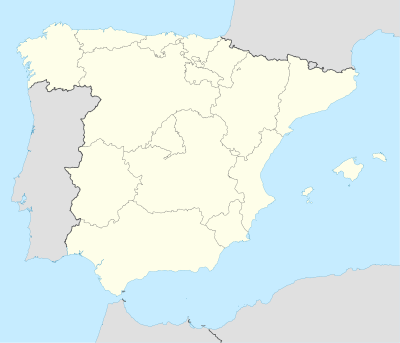
| Team | Home city | Stadium | Capacity |
|---|---|---|---|
| Almería | Almería | Estadio del Mediterráneo | 22,000 |
| Athletic Bilbao | Bilbao | San Mamés | 39,750 |
| Atlético Madrid | Madrid | Vicente Calderón | 54,851 |
| Barcelona | Barcelona | Camp Nou | 98,772 |
| Deportivo La Coruña | A Coruña | Riazor | 34,600 |
| Espanyol | Cornellà de Llobregat | Estadi Cornellà-El Prat | 40,500 |
| Getafe | Getafe | Coliseum Alfonso Pérez | 17,700 |
| Hércules | Alicante | Estadio José Rico Pérez | 30,000 |
| Levante | Valencia | Estadi Ciutat de València | 25,534 |
| Málaga | Málaga | La Rosaleda | 28,963 |
| Mallorca | Palma de Mallorca | Iberostar Estadio | 23,142 |
| Osasuna | Pamplona | Estadio Reyno de Navarra | 19,800 |
| Racing Santander | Santander | El Sardinero | 22,271 |
| Real Madrid | Madrid | Santiago Bernabéu | 80,354 |
| Real Sociedad | San Sebastián | Estadio Anoeta | 32,076 |
| Sevilla | Sevilla | Ramón Sánchez Pizjuán | 45,500 |
| Sporting | Gijón | El Molinón | 29,800 |
| Valencia | Valencia | Mestalla | 55,000 |
| Villarreal | Vila-real | El Madrigal | 25,000 |
| Zaragoza | Zaragoza | La Romareda | 34,596 |
La Liga clubs in Europe
In addition to their success in Primera División, Real Madrid, Barcelona and Valencia are three of the most successful teams in European competition history. All three clubs are the only Spanish clubs to have won 5 or more international trophies. All three clubs are also in the top ten most successful clubs in European football in terms of total European trophies.[6] In 2005–06, Barcelona won the UEFA Champions League and Sevilla won the UEFA Cup. The Primera División became the first league to do the European "double" since 1997.
The Primera División is currently second in the UEFA rankings of European leagues based on their performances in European competitions over a five-year period, behind the English Premier League in first and ahead of Italy's Serie A in third.[7]
Champions
Year by year
Performance by club
| Club | Winners | Runners-up | Winning Years |
|---|---|---|---|
| Real Madrid CF |
|
|
1931–32, 1932–33, 1953–54, 1954–55, 1956–57, 1957–58, 1960–61, 1961–62, 1962–63, 1963–64, 1964–65, 1966–67, 1967–68, 1968–69, 1971–72, 1974–75, 1975–76, 1977–78, 1978–79, 1979–80, 1985–86, 1986–87, 1987–88, 1988–89, 1989–90, 1994–95, 1996–97, 2000–01, 2002–03, 2006–07, 2007–08 |
| FC Barcelona |
|
|
1929, 1944–45, 1947–48, 1948–49, 1951–52, 1952–53, 1958–59, 1959–60, 1973–74, 1984–85, 1990–91, 1991–92, 1992–93, 1993–94, 1997–98, 1998–99, 2004–05, 2005–06, 2008–09, 2009–10 |
| Atlético Madrid |
|
|
1939–40, 1940–41, 1949–50, 1950–51, 1965–66, 1969–70, 1972–73, 1976–77, 1995–96 |
| Athletic Bilbao |
|
|
1929–30, 1930–31, 1933–34, 1935–36, 1942–43, 1955–56, 1982–83, 1983–84 |
| Valencia CF |
|
|
1941–42, 1943–44, 1946–47, 1970–71, 2001–02, 2003–04 |
| Real Sociedad |
|
|
1980–81, 1981–82 |
| Deportivo de La Coruña |
|
|
1999–2000 |
| Sevilla FC |
|
|
1945–46 |
| Real Betis |
|
|
1934–35 |
Note on name changes
During the Second Spanish Republic clubs such as Real Madrid and Real Betis dropped the Real from their name and Real Sociedad became Donostia CF. In 1941, a decree issued by Franco banned the use of non-Spanish language names. FC Barcelona and Sevilla FC became CF Barcelona and Sevilla CF, Athletic Aviación changed the spelling of its prefix to Atlético, and Sporting de Gijón and Racing de Santander became Real Gijón and Real Santander. Some of these changes have been undone.
Players
Eligibility of non-EU players
In La Liga, players can claim citizenship from the nation their ancestors came from. If a player does not have European ancestry, he can claim Spanish citizenship after playing in Spain for 5 years. Sometimes, this can lead to a triple-citizenship situation e.g. Leo Franco, who is Argentine-born, of Italian heritage and can claim a Spanish passport, having played in La Liga for over 5 years.
In addition, players from the ACP countries—countries in Africa, the Caribbean, and the Pacific that are signatories to the Cotonou Agreement—are not counted against non-EU quotas, due to the Kolpak ruling.
Individual awards
Many individual awards are conceded relating to La Liga, although not sanctioned by the LFP nor the RFEF they are widely regarded as official.
The most notable of these are three awarded by Spain's biggest sports paper, Marca, namely the Pichichi Trophy, awarded to the top scorer of the season, the Ricardo Zamora Trophy for the goalkeeper with the least "goals-to-games" ratio, and the Trofeo Alfredo di Stéfano, for the player judged to be the best overall player in the division. The most recent winners (for the 2009–10 season) were:
- Pichichi - Lionel Messi (Barcelona)
- Ricardo Zamora - Víctor Valdés (Barcelona)
- Zarra Trophy - David Villa (Valencia CF)
- Trofeo Alfredo di Stéfano - Lionel Messi (Barcelona)
All-time top scorers
| Rank | Player | Goals | Par |
|---|---|---|---|
| 1 | 252 | 0,91 | |
| 2 | 234 | 0,67 | |
| 3 | 228 | 0,42 | |
| 4 | 227 | 0,69 | |
| 5 | 226 | 0,64 | |
| 6 | 219 | 0,49 | |
| 7 | 210 | 0,76 | |
| 8 | 195 | 0,84 | |
| 9 | 186 | 0,40 | |
| 10 | 182 | 0,52 | |
| 11 | 181 | 0,70 | |
| 12 | 162 | 0,59 | |
| 13 | 160 | 0,44 | |
| 14 | 156 | 0,86 | |
| 15 | 151 | 0,36 | |
| 16 | 150 | 0,52 | |
| 17 | 147 | 0,48 | |
| 18 | 141 | 0,49 | |
| 19 | 139 | 0,58 | |
| 20 | 139 | 0,69 | |
| (Bold denotes players still playing in La Liga) | |||
European Footballers of the Year
The following were all elected winners of the Golden Ball while playing in La Liga:

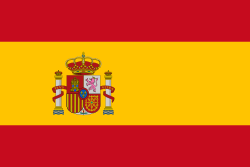 Alfredo di Stéfano - 1957, 1959 (Real Madrid)
Alfredo di Stéfano - 1957, 1959 (Real Madrid) Raymond Kopa - 1958 (Real Madrid)
Raymond Kopa - 1958 (Real Madrid) Luis Suárez - 1960 (FC Barcelona)
Luis Suárez - 1960 (FC Barcelona)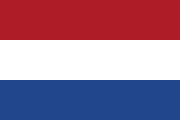 Johan Cruijff - 1973, 1974 (FC Barcelona)
Johan Cruijff - 1973, 1974 (FC Barcelona) Hristo Stoichkov - 1994 (FC Barcelona)
Hristo Stoichkov - 1994 (FC Barcelona)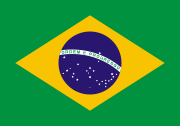 Rivaldo - 1999 (FC Barcelona)
Rivaldo - 1999 (FC Barcelona)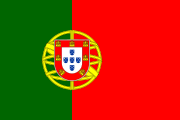 Luís Figo - 2000 (FC Barcelona) transfer to (Real Madrid)
Luís Figo - 2000 (FC Barcelona) transfer to (Real Madrid) Ronaldo - 2002 (Real Madrid)
Ronaldo - 2002 (Real Madrid) Ronaldinho - 2005 (FC Barcelona)
Ronaldinho - 2005 (FC Barcelona)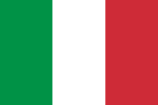 Fabio Cannavaro - 2006 (Juventus) transfer to (Real Madrid)
Fabio Cannavaro - 2006 (Juventus) transfer to (Real Madrid) Lionel Messi - 2009 (FC Barcelona)
Lionel Messi - 2009 (FC Barcelona)
See also
- All-Time La Liga table
- List of attendance figures at domestic professional sports leagues
- 2009–10 La Liga
- List of football clubs in Spain
- Supercopa de España
- Football records in Spain
Notes and references
- ↑ "European football statistics". 2008. http://www.european-football-statistics.co.uk/attn.htm.
- ↑ "Reglamento General de la RFEF 2010 (Artículo 201)" (in Spanish). RFEF. 7 June 2010. http://www.rfef.es/FCKeditor/UserFiles/File/normativas/Reglamento2010.pdf. Retrieved 23 June 2010.
- ↑ "Criterios de puntuación del juego limpio" (in Spanish). RFEF. 30 October 1998. http://www.rfef.es/index.jsp?nodo=298#ancla2. Retrieved 18 May 2010.
- ↑ http://soccernet.espn.go.com/news/story?id=788913&sec=europe&cc=5901
- ↑ "Sergio Ramos presenta en Madrid el nuevo balón de la Liga, el 'T90 Tracer'" (in Spanish). 20 minutos. 25 August 2010. http://www.20minutos.es/noticia/797075/0/balon/liga/nike/. Retrieved 2 July 2010.
- ↑ "UEFA club competitions press kit (.PDF archive, page 23)". UEFA Official Website. http://www.uefa.com/printoutfiles/competitions/supercup/2006/e/e_84343_pk.pdf. Retrieved 2006-08-25.
- ↑ "UEFA ranking of European leagues". Bert Kassies. August 2008. http://www.xs4all.nl/~kassiesa/bert/uefa/data/method3/crank2009.html.
External links
- (Spanish) Official La Liga Site
- (Spanish) Official RFEF Site
- La Liga database at Footbalistic
- La Liga Results and News at Yahoo! Eurosport UK
- Historical Database
- Primera Liga : presentation — All time table and all results since 1928 with links to entire results and winners, second and third.
|
||||||||
|
|||||
|
|||||||||||||||||||||||||||||
|
||||||||